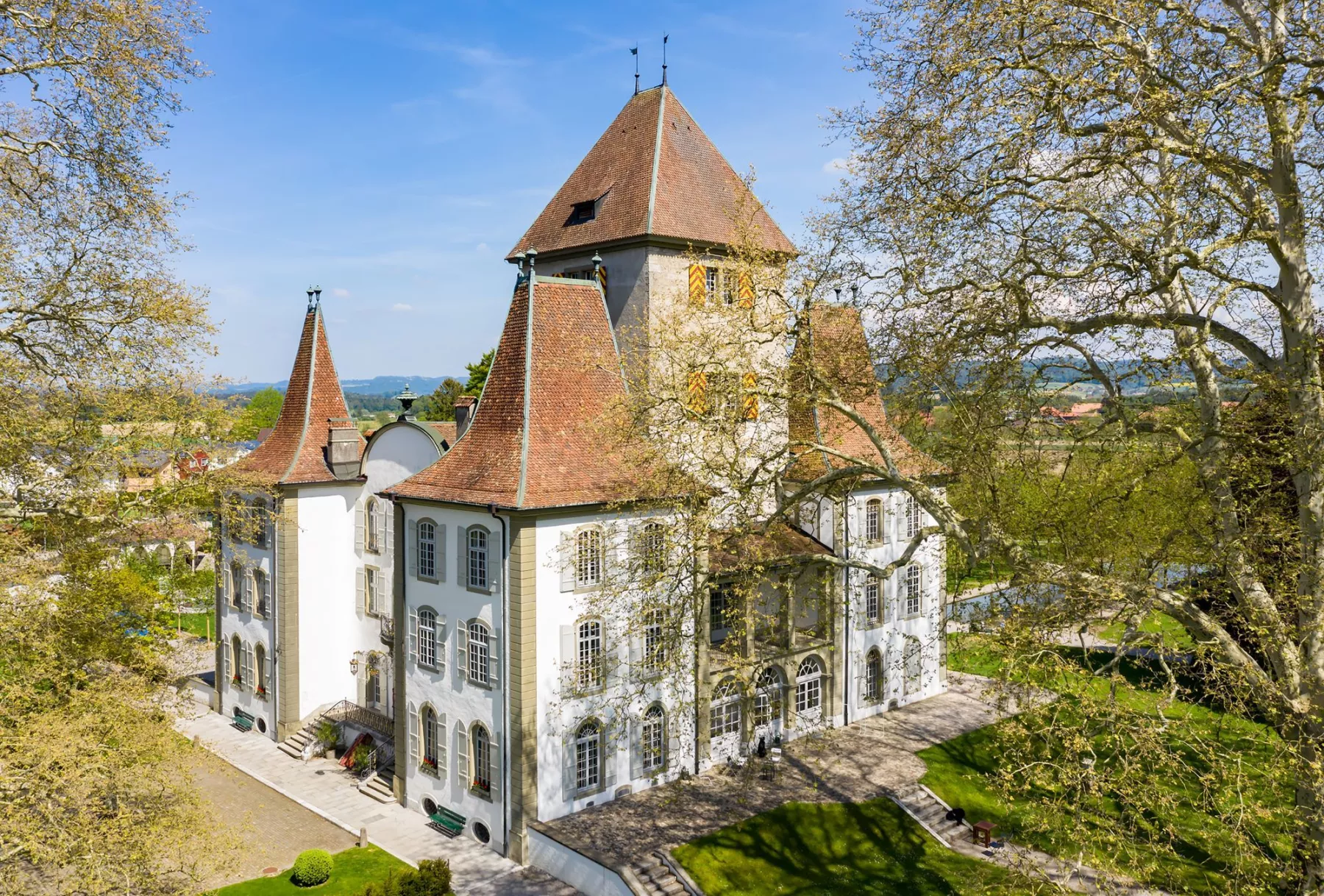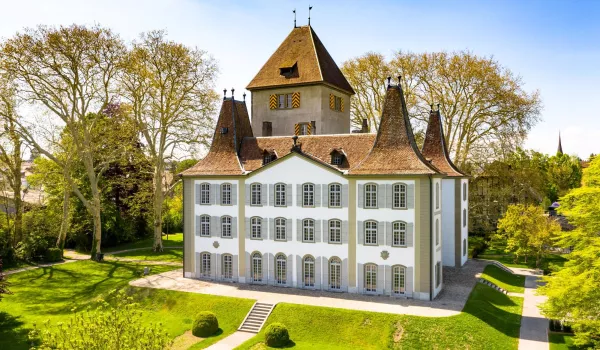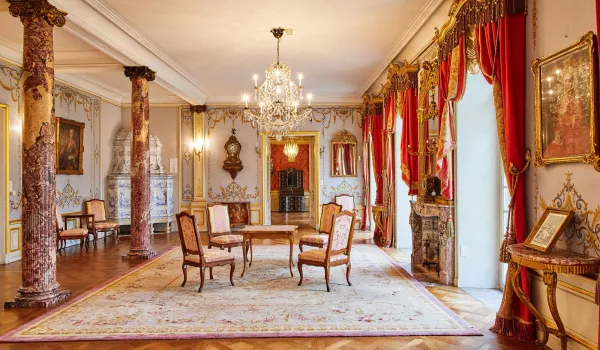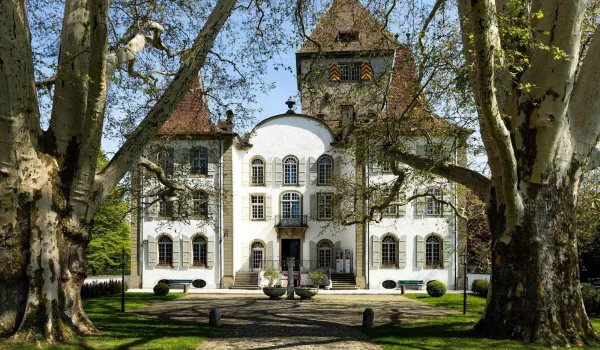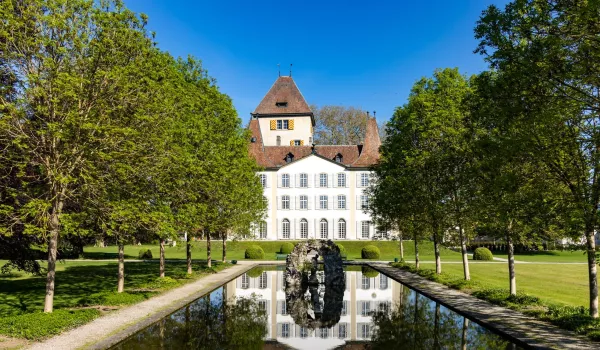Jegenstorf Castle
Jegenstorf, BE
Just outside the city of Bern, Jegenstorf Castle reflects the splendour of bygone eras with a unique living and interior museum. Furniture, arts and crafts, clocks, tiled stoves and paintings of the highest quality provide an insight into Bernese domestic culture from the 17th to 19th centuries, with the ‘baroque’ 18th century taking centre stage. Special exhibitions, events and programmes for adults and children enliven the castle with its extensive, secluded park.
The splendour of the past
Jegenstorf Castle and its spacious park illustrate the splendour of past ages with their elegant interior decorations. Furnishings, handicrafts, clocks, tiled stoves and paintings of the highest quality shed light on Bernese culture and interior design from the 17th to the 19th centuries. The main focus of the castle's exhibition lies on the Baroque splendour of the 18th century. In addition to periodically changing special exhibitions, Jegenstorf Castle hosts a variety of events and bookable offers for young and old: Guided tours, readings, adventure tours, story readings and concerts. Every two years there is an open-air theatre and an open-air cinema in the castle's park, which is open at all times year-round, inviting visitors to take a short stroll or to rest a while.
From fortress to castle
It is said that the old fortress was built in 1111, the very same year that Berchthold II von Zähringen died. Castle and estate belonged to the lords of Jegistorf, vassals to the von Zähringen family. The fortress was most likely built to secure the trade routes between Solothurn and Bern. Originally built in wood, the fortress was reconstructed in stone during the 13th or 14th centuries and a moat was added for additional security. In 1720, Albrecht Friedrich von Erlach (1696-1788) had the building remodelled into an elegant Baroque country manor. The medieval keep still stands at the heart of the modern castle complex. While the castle architecture has remained largely unchanged since this last large-scale remodelling, the interior was refurbished between 1913 and 1915 at the behest of the castle's last private owner. Arthur von Stürler (1874-1934) lost his fortune not long after the renovations: Having invested large sums in Russia’s agriculture he was dispossessed during the Russian Revolution in 1917. After his death the castle was auctioned off.
Cultural monument, residential museum and venue
In 1936 the estate was bought up by the Jegenstorf Castle Conservation Society and was slowly turned into a museum. By 1955 the society had evolved into a foundation with the aim of ensuring that the castle and park are preserved in accordance with modern principles of cultural heritage preservation and are kept in good repair. The foundation also ensures that the buildings remain open to the public.
The unique museum with its splendid furnishings still reflects much of the fabulous lifestyle of its former residents: High-quality artefacts from bourgeois and patrician homes in the old republic and city of Bern as well as choice furnishings and pieces of art illustrate Bernese lifestyle and culture from the 17th to the 19th centuries. The main focus of the castle's exhibition lies on the Baroque splendour of the 18th century. The collection’s highlights include over a dozen painted tiled stoves from many different areas in Switzerland, a substantial collection of portraits as well as furnishings produced by the Bernese cabinetmakers Funk, Hopfengärtner and Aebersold.
Once a command post and imperial residence
From October 1944 until the end of the active service, Jegenstorf Castle served as command post to General Henri Guisan. In addition to his study on the first floor, he occupied a private bedroom in the castle - according to legend he slept on a camp bed. In November 1954 the castle briefly served as an imperial residence: During a state visit to Switzerland, emperor Haile Selassie of Ethiopia stayed at the castle for four days. For this occasion the confederacy had a bathroom built into the two metre thick castle walls!
A castle park with flora and fauna
The expansive and cosy park is not only ideal for a relaxing stroll but also serves as a spectacular backdrop for events. Highlights are the water fountains with trout, the large carp pond complete with nymph and grotto, the ProSpecieRara apple plantation, the peony gardens and the largest and oldest plantain trees in the Canton of Bern. An insider's tip is the home-made sparkling apple wine enjoyed in the castle's café located in the old washhouse.
The castle is open from 2 May to 19 October 2025:
Tuesday to Saturday: 13.30 – 17.30
Sunday: 11.00 – 17.30
The park is open until 1 May from 8.00 – 18.00.
The park is open from 2 May to 19 October from 8.00 – 22.00.
Individual visitors
| Adults | CHF 12 |
| AHV, IV, apprentices, students, military | CHF 10 |
| Children/young people up to 16 years | CHF 5 |
Groups
| Per person | CHF 10 |
Free admission
| Children up to 6 years |
| Families: free admission for the third and each additional child |
| Membership card Jegenstorf Castle Association |
| Swiss Museums Association membership card |
| Raiffeisen card |
| Museum Pass |
Castle grounds are freely accessible 7 days a week. Picnics are allowed in the castle grounds
Extensive walks in the grounds around the castle. Park with historical apple trees (ProSpeciaRara), peony garden, carp pond, fountain with trout, and historical buildings such as an orangery, a bathhouse and a washhouse.
Castle grounds and café are wheelchair accessible.
Dogs are allowed in the café and castle courtyard (on a leash).
Castle café: Tea, coffee, pastries and refreshments are served at the historical washhouse.
Open from May to October. Opening hours. Wednesday to Saturday from 14:00 to 17:00, Sunday from 13:00 to 17:00.
Speciality: "Schloss Jegenstorf" sparkling apple wine made of various kinds of apple from the historical arboretum (ProSpecieRara).
Nearby
Gasthof Löwen, Löwenplatz 1, Jegenstorf, 031 761 02 02. Closed Mondays and Tuesdays (except for groups with a pre-arranged appointment).
Several hiking routes, for example: Zollikofen-Jegenstorf (1 hours, 50 minutes).
Several cycling routes
Solbad Schönbühl: a salt water bath: 5 mintues from Jegenstorf
Castle Shopshop: "Schloss Jegenstorf" sparkling apple wine made of various kinds of apple from the historical arboretum, various liqueurs made from fruits grown in the castle grounds (plums, quinces, mirabelles, plumsdamsons)
Jegenstorf cheese dairy ("Schloss Castle Fondue")
Grossenbacher bakers and confectioners (various castle products)
Jegenstorfer Schmitte beer from the small brewery in the forge at the centre of Jegenstorf
Accomodations
Gasthof und Hotel Schönbühl, Alte Bernstrasse 11, Schönbühl, +41 (0) 31 859 69 69. Restaurant is closed on Wednesdays.
Gasthof und Hotel Kreuz, Bernstrasse 14, Grafenried, +41 (0) 31 767 71 55. Restaurant is closed Mondays and Tuesdays.
Arrival
Schloss Jegenstorf
General-Guisanstrasse 5
3303 Jegenstorf
by train
RegioExpress from Bern central station and Solothurn central station.
S-Bahn (line 8) from Bern central station.
The castle is immediately adjacent to the stop "Jegenstorf".
By car
From Basel/Zurich: A1 to the Kirchberg exit, carry on towards Bern as far as Hindelbank, then turn off to Jegenstorf
From Bern: A1 to the Schönbühl exit, then carry on towards Solothurn as far as Jegenstorf.
Arrival with Google Maps
